Experience western Bhutan valleys of Paro, Thimphu, Punakha, and Phobjikha with Amankora luxury lodges in all of the above places. The tour includes sightseeing of ancient Bhutanese monuments, Himalayan peaks, arts and crafts of the locales, and the beautiful lush green valley filled with flora and fauna.
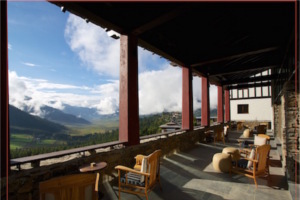
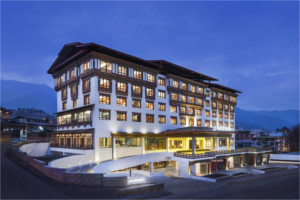
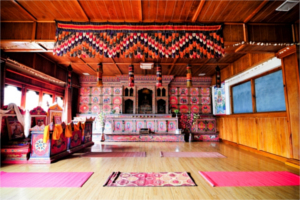
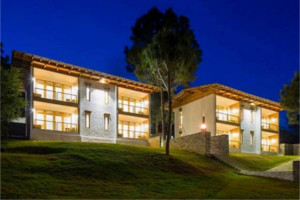
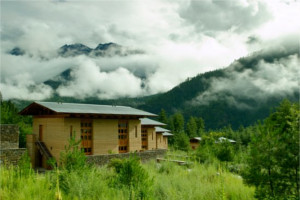
Our representative will receive you at the airport and then transfer to a restaurant for lunch. Paro is at altitude 7000 feet or 2133m. Paro valley is a small yet beautiful home to many of Bhutan’s oldest monasteries and temples. The country’s only international airport is in Paro. The valley is also home to mount Jhomolhari (7300 meters), second highest unclimbed mountain in the world situated at the northern end of the valley whose glacial water forms the Paachu, the main river flowing through the valley. After lunch, visit the National Museum and Paro Rinpung Dzong. Drive to Thimphu in the evening.
Overnight stay at Amankora Thimphu.
Visit the National Takin Reserve Center to see Takin, the national animal of Bhutan and Trashichhodzong (fortress of glorious religion). Trashichhodzong in its current form was completed in 1968 and it houses the throne room of His Majesty the King of Bhutan. It is also a center of monastic body and houses main secretariat building. The majestic Dzong located along the Wangchu (Thimphu River) has a Tendrel Thang which is the venue for Thimphu Dromchoe and Thimphu Tsechu, the annual Thimphu Festival where thousands of people fill the courtyard to witness the mask dances, traditional dances, and many more.
Visit Buddha Dordenma, the largest standing Buddha Statue in the world. Buddha Dordenma is 54 meters (177 ft) tall, one of the largest Buddha Shakyamuni statue in the world, fulfilling a prophecy that mentioned a large statue of either Guru Padmasambhava, Buddha or of a (Vajrakilaya) Phurba would be built in the region to bestow blessings, peace, and happiness on the world, the statue erection was started in 2006 and completed in 2015. The statue is mentioned in the ancient Terma of Guru Padmasambhava himself dated from approximately the sixth century, the prophesized Terma was recovered some 672 years ago by Terton Dorje Lingpa (1346) and 104 years and after 568 years ago by Terton Pema Lingpa.
Also visit Folk Heritage museum, Royal Textile Museum and craft markets. Other options for the day include a hike to Tango and Cheri Monasteries (45 mins), two of the most ancient monasteries in the Thimphu region
Overnight stay at Amankora Thimphu.
Stop at Dochula pass 3100m on route to Punakha from Thimphu. Dochula pass is one of the famous landmarks in Bhutan from which one can sight the Himalayan Range of Bhutan on clear winter days. The place is adorned with Druk Wangyel Chorten, 108 stupas built to honor the 4th king of Bhutan and bring peace to the region. The stupas were built under the patronage of Ashi Dorji Wangmo Wangchuck.
Descend to Punakha Valley (1280m).
Punakha valley served as the capital of Bhutan till 1955 until it was shifted to Thimphu. The Punakha Dzong is still the winter seat of Je Khenpo (Chief Abbot) of the monastic body as the place has a temperate climate with Phochu and Mochu Rivers flowing through the fertile fields of the valley.
Visit Chimmi Lhakhang, the temple of Lama Drukpa Kuenley (The Devine Mad Man). Chimmi Lhakhang was built in 1499 by Lam Ngawang Chogyel on the spot where Lama Drukpa Kuenley subdued a demon who was fleeing away in form of a dog and buried the demon naming the spot as khe mae (no dog now). Hence the temple was named Temple of no dog (Chimmi Lhakhang)
Visit Punakha Dzong.
Punakha Dzong or Pungthang Dewa Chenpai Phodrang, the palace of bliss was built in 1937 by Zhabdrung Ngawang Namgyel. The second oldest Dzong of Bhutan is religiously and architecturally significant to Bhutanese as it houses several sacred relics, scriptures, statues and is the place where the first king of Bhutan was crowned in 1907. Punakha Dzong is also famous for Punakha Drupchen where the 17th-century battle scene with Tibetan invaders are recreated and is followed by Punakha Tsechu where grand Thongdrel of Guru Rinpoche is unfurled with costumed mask dances and rituals.
Overnight at Amankora Punakha.
After breakfast drive to Gantey Phobjikha via Wangduephodrang.
Drive to scenic Phobjikha valley, visit Gantey Goemba, the only Nyingmapa monastery in western Bhutan. Phobjikha is a most scenic valley in Bhutan and is often described as picturesque, breathtaking and many more by the visitors.
Known for its vast valley landscape and winter home for Black-Necked Crane, Phobjikha valley at an altitude of 3000m is one of the most famous tourist destinations in western Bhutan. The vast U shaped valley offers lots of scenic hiking routes and nature trails for the visitors. Overlooking the valley is the Gantey Goemba the oldest Nyingmapa Monastery which dates back to 17th century. The monastery also is the venue for the annual Black-Necked Crane Festival.
Visit the Nature Conservation Centre and learn about the black necked Cranes that fly into this valley from Tibet every winter.
Overnight at Amankora Phobjikha.
Drive back to Paro valley from Phobjikha. In the afternoon stroll around the Paro town and visit some revered Buddhist monuments in the valley. Paro town is filled with beautiful local arts and crafts shops for one may be interested to take on souvenir shopping.
Overnight stay at Amankora Paro
Early breakfast.
Hike up to Paro Taktsang, the famous Tiger’s Nest. Perched on the cliff side at height of 900m above the Paro valley, the 3hr hike is the most trodden route in Bhutan as every visitor land up visiting the landmark. It is believed that Guru Padmasambhava flew on this site on a Tigresses back and meditated there for months eventually bringing Buddhism to Bhutan.
Rest of the day, enjoy the spa at the Amankora and stroll around the shops in the town.
Overnight stay at Amankora Paro.
daily tariff:USD 250 Per person per night
surcharges:
Solo Traveller: USD 40 per night
Dual Traveller: USD 30 per person per night
Three travellers and above: surcharges not applicable
Visa fees: One time payment of USD 40 per person.
daily tariff:USD 200 Per person per night
surcharges:
Solo Traveller: USD 40 per night
Dual Traveller: USD 30 per person per night
Three travellers and above: surcharges not applicable
Visa fees: One time payment of USD 40 per person.
A minimum of 3 star accommodation (4 & 5 star may require an additional premium).
All meals
A licensed Bhutanese tour guide for the extent of your stay
All internal transport (excluding internal flights)
Camping equipment and haulage for trekking tours